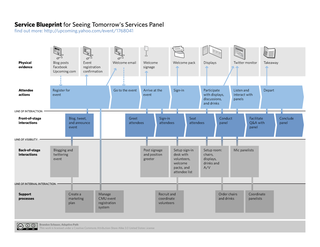Customer relationship management (CRM) is a process in which a business or other organization administers its interactions with customers, typically using data analysis to study large amounts of information.

A call centre or call center is a managed capability that can be centralised or remote that is used for receiving or transmitting a large volume of enquiries by telephone. An inbound call centre is operated by a company to administer incoming product or service support or information enquiries from consumers. Outbound call centres are usually operated for sales purposes such as telemarketing, for solicitation of charitable or political donations, debt collection, market research, emergency notifications, and urgent/critical needs blood banks. A contact centre is a further extension to call centres telephony based capabilities, administers centralised handling of individual communications, including letters, faxes, live support software, social media, instant message, and email.

Team building is a collective term for various types of activities used to enhance social relations and define roles within teams, often involving collaborative tasks. It is distinct from team training, which is designed by a combine of business managers, learning and development/OD and an HR Business Partner to improve the efficiency, rather than interpersonal relations.
The word ‘dynamics’ appears frequently in discussions and writing about strategy, and is used in two distinct, though equally important senses.

A business analyst (BA) is a person who processes, interprets and documents business processes, products, services and software through analysis of data. The role of a business analyst is to ensure business efficiency increases through their knowledge of both IT and business function.

NICE is a New York metropolitan area based, public, global company with operations around the world. It specializes in contact center software, artificial intelligence, digital and workforce engagement management solutions. The company serves various industries, such as financial services, telecommunications, healthcare, outsourcers, retail, media, travel, service providers, and utilities.
Supplier relationship management (SRM) is the systematic, enterprise-wide assessment of suppliers' strengths, performance and capabilities with respect to overall business strategy, determination of what activities to engage in with different suppliers, and planning and execution of all interactions with suppliers, in a coordinated fashion across the relationship life cycle, to maximize the value realized through those interactions. The focus of supplier relationship management is the development of two-way, mutually beneficial relationships with strategic supply partners to deliver greater levels of innovation and competitive advantage than could be achieved by operating independently or through a traditional, transactional purchasing arrangement. Underpinning disciplines which support effective SRM include supplier information management, compliance, risk management and performance management.
The eCRM or electronic customer relationship management coined by Oscar Gomes encompasses all standard CRM functions with the use of the net environment i.e., intranet, extranet and internet. Electronic CRM concerns all forms of managing relationships with customers through the use of information technology (IT).
Enterprise feedback management (EFM) is a system of processes and software that enables organizations to centrally manage deployment of surveys while dispersing authoring and analysis throughout an organization. EFM systems typically provide different roles and permission levels for different types of users, such as novice survey authors, professional survey authors, survey reporters and translators. EFM can help an organization establish a dialogue with employees, partners, and customers regarding key issues and concerns and potentially make customer-specific real time interventions. EFM consists of data collection, analysis and reporting.
Business development entails tasks and processes to develop and implement growth opportunities within and between organizations. It is a subset of the fields of business, commerce and organizational theory. Business development is the creation of long-term value for an organization from customers, markets, and relationships. Business development can be taken to mean any activity by either a small or large organization, non-profit or for-profit enterprise which serves the purpose of ‘developing’ the business in some way. In addition, business development activities can be done internally or externally by a business development consultant. External business development can be facilitated through Planning Systems, which are put in place by governments to help small businesses. In addition, reputation building has also proven to help facilitate business development.
Lead management is a set of methodologies, systems, and practices designed to generate new potential business clientele, generally operated through a variety of marketing campaigns or programs. Lead management facilitates a business's connection between its outgoing consumer advertising and the responses to that advertising. These processes are designed for business-to-business and direct-to-consumer strategies. Lead management is in many cases a precursor to sales management, customer relationship management and customer experience management. This critical connectivity facilitates business profitability through the acquisition of new customers, selling to existing customers, and creating a market brand. This process has also accurately been referred to as customer acquisition management.
A touchpoint can be defined as any way consumers can interact with a business organization, whether it be person-to-person, through a website, an app or any form of communication. When consumers come in contact with these touchpoints it gives them the opportunity to compare their prior perceptions of the business and form an opinion.
Customer engagement is an interaction between an external consumer/customer and an organization through various online or offline channels. According to Hollebeek, Srivastava and Chen S-D logic-Definition of customer engagement is "a customer’s motivationally driven, volitional investment of operant resources, and operand resources into brand interactions," which applies to online and offline engagement.

Customer experience is the totality of cognitive, affective, sensory, and behavioral consumer responses during all stages of the consumption process including pre-purchase, consumption, and post-purchase stages. Pine and Gilmore described the experience economy as the next level after commodities, goods, and services with memorable events as the final business product. Four realms of experience include esthetic, escapist, entertainment, and educational components.
Lead scoring is a methodology used to rank prospects against a scale that represents the perceived value each lead represents to the organization. The resulting score is used to determine which leads a receiving function will engage, in order of priority.
Social CRM is the use of social media services, techniques and technology to enable organizations to engage with their customers.

The service blueprint is a technique originally used for service design, but has also found applications in diagnosing problems with operational efficiency. The technique was first described by G. Lynn Shostack, a bank executive, in the Harvard Business Review in 1984. The service blueprint is an applied process chart which shows the service delivery process from the customer's perspective. The service blueprint has become one of the most widely used tools to manage service operations, service design and service.
The Digital Firm is a kind of organization that has enabled core business relationships through digital networks In these digital networks are supported by enterprise class technology platforms that have been leveraged within an organization to support critical business functions and services. Some examples of these technology platforms are Customer Relationship Management (CRM), Supply Chain Management (SCM), Enterprise Resource Planning (ERP), Knowledge Management System (KMS), Enterprise Content Management (ECM), and Warehouse Management System (WMS) among others. The purpose of these technology platforms is to digitally enable seamless integration and information exchange within the organization to employees and outside the organization to customers, suppliers, and other business partners.
Marketing automation refers to software platforms and technologies designed for marketing departments and organizations to more effectively market on multiple channels online and automate repetitive tasks.
Workforce optimization (WFO) is a business strategy that integrates business performance considerations with workforce management. The strategy involves automating processes, data visibility, compliance on legislation and solving business problems related to staffing. It is used by call centers to improve workforce management and agent performance.





